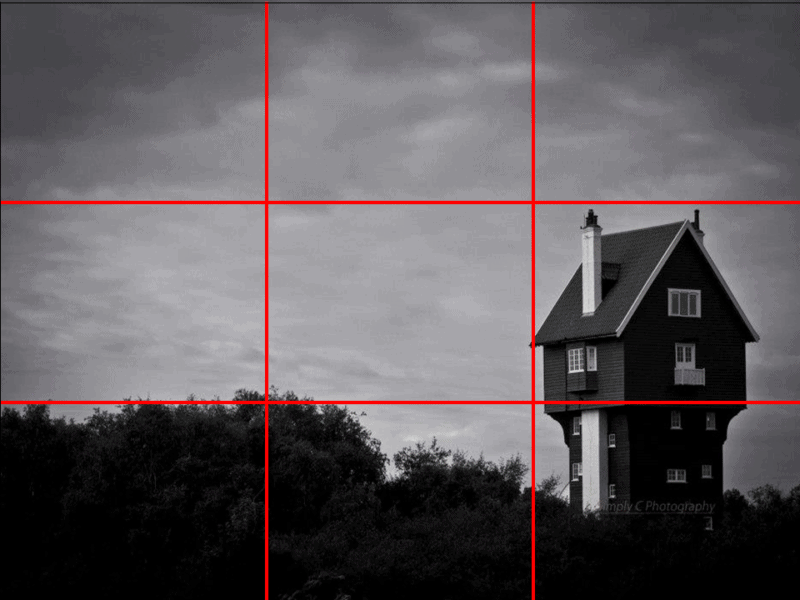Cherry Beesley’s guide to taking the perfect photo this Christmas
22/12/2020 - Simply C Photography

What do you hope to find in your stocking this Christmas morning? For many a new camera or smart phone will be top of the list – especially with the growing popularity of photography as a hobby over lockdown.
Cherry says she is regularly asked if there are any quick tricks that people could apply to improve their photography, turn their snaps into ‘proper images’ and add the ‘wow! Factor’ to social media shots. Taking great photos isn’t about having the latest camera or the most expensive lenses. By applying a few basic principles and acknowledging the dos and don’ts anyone can turn an ordinary snap into a visually engaging image, regardless of their camera.
Here, Cherry has pulled together a few tips for creating simply wonderful photographs:
1) Composition is a key element in creating balanced and interesting images. Photographers, as they start out, learn the “rule of thirds” principle. It is not a rule that must be adhered to, more a guide, but a key principle that, if learned, will help you create more pleasing, balanced and compelling picture.
To implement the rule of thirds either in your mind, using your viewfinder or in the LCD panel on your camera place two horizontal lines and two vertical lines over your image, like a noughts and crosses board.
The best positions to place the main points of interest in your picture lie generally along these four gridlines. Where the lines intersect is known as the four “points of interest”.
Experience shows that when you’re viewing a picture, your eyes usually go naturally to one of the points of interest rather than the centre so ideally you should attempt to position your focal point on one of the four intersections of these lines. Next time you’re composing a shot use this guide. Forget putting the horizon or the subject in the middle of the frame, go for one of the horizontal lines for the horizon, or a vertical one for the subject and see if you agree with the principle.
All too often you see five or six pictures of exactly the same image and they all have the same issues, they’re slightly blurry as they’ve been taken too quickly and the wrong elements are in focus or not in focus at all.

Rule Of Thirds Grid
2) All you need to do is take your time. Don’t rush. Decide what you want to capture, compose the image, check the subject you want to capture is in focus, then press the shutter but don’t be too hasty to move on too quickly. Ensure the camera has finished taking the picture before moving. Lean against something like a wall for balance perhaps, just to help keep your hand steady.
3) Change your perspective – Most of the time pictures are taken from a straight on standing perspective. Why not try and change the angle where you are shooting from e.g. crouch down or move the camera. Challenge the usual way you look at things and see things from a different viewpoint. Cherry says she is forever saying “look up”, as it is amazing what you can miss purely by looking straight ahead and not properly taking in your surroundings.
4) Framing an image – When composing your image don’t overcrowd it with elements that add nothing but distraction to the eye, such as lampposts on the side of the frame. A lamppost perhaps could be showing perspective i.e. size but if it adds nothing but distracts the viewer from what you want them to focus on then it’s superfluous, so eliminate it. Move closer to the subject or try cropping it out. Always ask yourself what am I trying to convey here in my image. What is the story?
5) Lighting – there are too many rules around lighting to cover here. Cherry suggests the biggest tip is don’t ever shoot into the sun, all you’ll get is a white image, glare or a broken burnt out camera, instead change your angle or the subjects. Perhaps try and avoid photographing at midday when the sun is at its highest and there are no shadows to add texture, depth and perspective elements to your picture. Early morning and early evening sunset times are the golden hours for photographers with long shadows and more rich warmer colours adding depth.
6) Enjoy it
7) Practice…practice…..practice.
These are just a very few guidelines, not rules, which will help you create an image that has more impact. However the key to photography is to experiment and then practice, practice, practice but most of all have fun with it. The best images can sometimes come purely from the simple pleasure of photography, creativity and experimentation.
If you want to read more about Cherry Beesley and Simply C Photography, please visit her website or contact her on 07775 851827.
All articles on this news site are submitted by registered contributors of NorfolkWire. Find out how to subscribe and submit your stories here »



